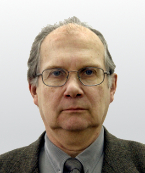Grzegorz Chałasiński
Professor
 E-mail Phone+48 22 5526377 Room501 AddressL. Pasteura 1 St.
E-mail Phone+48 22 5526377 Room501 AddressL. Pasteura 1 St.02-093 Warsaw
Poland
Beneficiary of the MISTRZ Academic Grant for Professors
Chałasiński's research group
- Grzegorz Chałasiński, Prof.
- Maria M. Szczęśniak, Prof. -- Oakland University
- Łukasz Rajchel, Ph.D. -- ICM, Essen
- Michał Hapka, Ph.D.
- Marcin Modrzejewski, Ph.D.
Publications: Google Scholar
Curriculum Vitae (pdf)
Education:
- M.Sc. degree (1972)
- Ph.D. (1977)
- D.Sc. (1986)
- Full Professor of Chemistry at University of Warsaw, Faculty of Chemistry, Warsaw, Poland. Head of the Board of Interdisciplinary Center for Mathematical and Computational Modeling. Dean of Faculty of Chemistry 2001-2008. Adjunct Professor at Oakland University, Rochester, Michigan, USA.
Membership in Professional Societies:
- Member of Polish Chemical Society
- National Representative for Poland in International Society for Theoretical Chemical Physics.
- Member of American Chemical Society
Scientific interests:
- His primary interests include the theory of intermolecular interactions and ab initio calculations of the electronic structure of van der Waals clusters.
- Perturbation analysis of the supermolecular method in calculations of the interaction energies and elucidating of the origin of the basis- set superposition error are among his most important acheivements.
- Van der Waals complexes in the entrance channel of chemical reactions.
- Atom-molecule interaction, radical-molecule interaction, open-shell and molecule-molecule interaction.
- Application of DFT to intermolecultra interactions.
- He has published over one hundred forty papers.
Reviews:
- G. Chalasinski, M. Gutowski, "Weak Interactions between Small Systems. Models for Studying the Nature of Intermolecular Forces and Challenging Problems for Ab Initio Calculations", Chem. Rev., 88, 943-962 (1988).
- G. Chalasinski, M.M. Szczesniak "Origins of Structure and Energetics of van der Waals Clusters from Ab Initio Calculations." Chem. Rev. 94, 1723-1765 (1994).
- G. Chalasinski and M.M. Szczesniak, "State of the Art and Challenges of the Ab Initio Theory of Intermolecular Interactions" Chem. Rev. 100, 4227-4252(2000).
Selection of best original papers:
- M. Gutowski, F. B. van Duijneveldt, G. Chalasinski, L. Piela, "Proper Correction for Basis Set Superposition Error in SCF Calculations of Intermolecular Interactions", Mol. Phys., 61, 233-248 (1987).
- M. Gutowski, J. van Lenthe, J. Verbeek, F. B. van Duijneveldt, G. Chalasinski, "The Basis Set Superposition Error in Correlated Electronic Structure Calculations", Chem. Phys. Lett., 124, 370-375 (1986).
- G. Chalasinski, M. M. Szczesniak, "On the Connection between Supermolecular Moller-Plesset Treatment of the Interaction Energy and the Perturbation Theory of Intermolecular Forces", Mol. Phys., 63, 205-224 (1988).
- G. Chalasinski, M.M. Szczesniak, P. Cieplak, S. Scheiner, "Ab initio Study of Intermolecular Potential of H2O Trimer", J. Chem. Phys. 94 2873 (1991).
Selection of the most recent papers:
- M. Modrzejewski, L. Rajchel, G. Chałasiński, M. M. Szczęśniak „Density-Dependent Onset of the Long-Range Exchange: A Key to Donor-Acceptor Properties" Journal of Physical Chemistry A 117, 11580-11586 (2013)
- M. Modrzejewski, M. Hapka, G. Chałasiński, M. M. Szczęśniak „Employing Range Separation on the meta-GGA Rung: New Functional Suitable for Both Covalent and Noncovalent Interactions“ Journal of Chemical Theory and Computation 12, 3662-3673 (2016)
- M. Hapka, L. Rajchel, M. Modrzejewski, R. Schaffer, G. Chałasiński, M. M. Szczęśniak „The nature of three-body interactions in DFT: Exchange and polarization effects“ Journal of Chemical Physics 147, 084106 (2017).
- P. A. Gunka, M. Hapka, M. Hanfland, M. Dranka, G. Chałasiński, J. Zachara „How and Why Does Helium Permeate Nonporous Arsenolite Under High Pressure?“ ChemPhysChem 19, 857-864 (2018).
- M. Modrzejewski, G. Chałasiński, M. M. Szczęśniak „Assessment of Newest Meta-GGA Hybrids for Late Transition Metal Reactivity: Fractional Charge and Fractional Spin Perspective“ Journal of Physical Chemistry C 123, 8047-8056 (2019)

